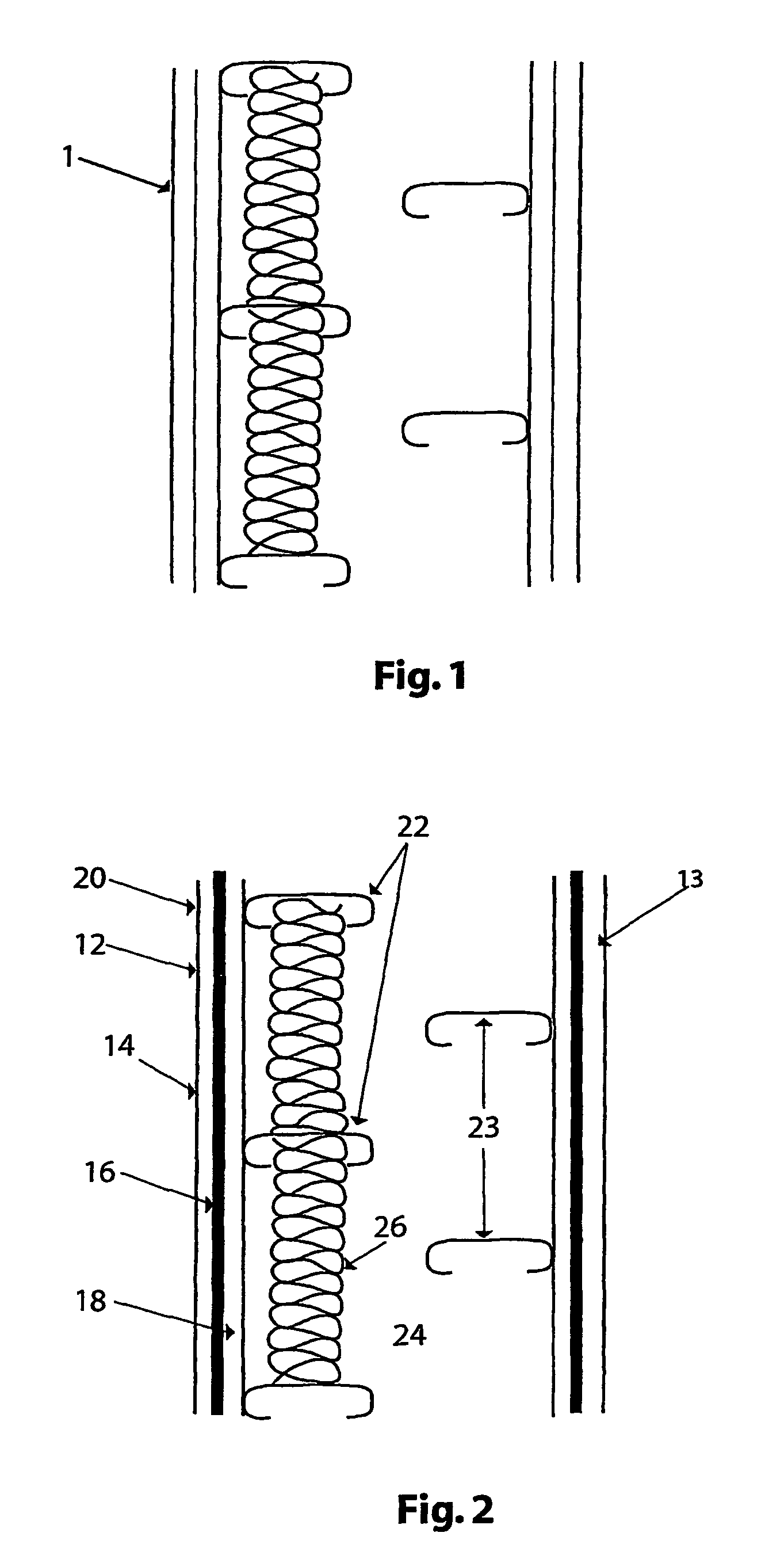Sound transmission reducing construction elements
a construction element and sound transmission technology, applied in the field of construction elements, can solve the problems of reducing the usable floor area and ceiling height in an apartment dwelling, affecting the degree of mechanical coupling between layers, and affecting the sound transmission loss, so as to reduce the available space, increase the cost, and reduce the mass
- Summary
- Abstract
- Description
- Claims
- Application Information
AI Technical Summary
Benefits of technology
Problems solved by technology
Method used
Image
Examples
example
[0102]100 g of water together with 100 g of glycerine and 10 g of starch was mixed and then heated to a temperature of 85° C. 80 g of gelatine and 20 g of magnesium chloride was then dissolved into the mixture and a gel was formed. 310 g of barium sulphate was then added to the gel providing a composition with good flexibility, elasticity, tensile strength, and density with good film forming properties. The composition had the following composition by weight:[0103]16% water;[0104]16% glycerine;[0105]1.5% starch;[0106]13% gelatine;[0107]3.5% magnesium chloride; and[0108]50% barium sulphate.
[0109]The composition was then extruded into a flat sheet and bonded onto an aluminium film and then brought down to room temperature whereby the composition cured to form a sheet of composite material of 4 mm in thickness that showed excellent sound dampening properties.
PUM
| Property | Measurement | Unit |
|---|---|---|
| density | aaaaa | aaaaa |
| thickness | aaaaa | aaaaa |
| thickness | aaaaa | aaaaa |
Abstract
Description
Claims
Application Information
 Login to View More
Login to View More - R&D
- Intellectual Property
- Life Sciences
- Materials
- Tech Scout
- Unparalleled Data Quality
- Higher Quality Content
- 60% Fewer Hallucinations
Browse by: Latest US Patents, China's latest patents, Technical Efficacy Thesaurus, Application Domain, Technology Topic, Popular Technical Reports.
© 2025 PatSnap. All rights reserved.Legal|Privacy policy|Modern Slavery Act Transparency Statement|Sitemap|About US| Contact US: help@patsnap.com



